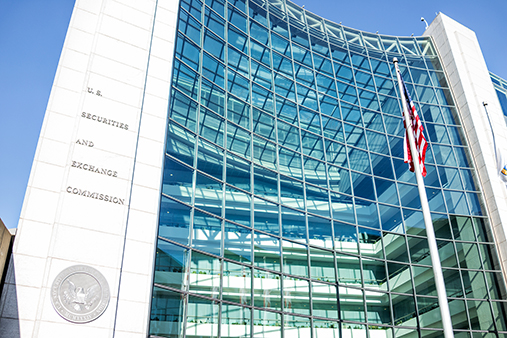In Amdocs (Israel) Limited v. Openet Telecom, Inc. 120 USPQ2d 1527 (Fed. Cir. 2016), a panel of the U.S. Court of Appeals for the Federal Circuit held that a system that has a distributed architecture and that assists with accounting and billing for network service providers was claimed in a manner that was eligible for patenting under 35 U.S.C. § 101, after evaluating the claims as they would be “understood in light of that written description.”
Amdocs sued Openet for infringement of four U.S. Patents. The Federal Circuit analyzed the asserted claims against the backdrop of the two-step analysis articulated by the Supreme Court in Alice Corp. v. CLS Bank International, 134 S. Ct. 2347 (2014). The Alice analysis first requires a determination of whether the claims are directed to a patent-ineligible concept. If they are, then the second step is to analyze whether the claim elements “‘transform the nature of the claim’ into a patent-eligible application” (quoting Mayo Collaborative Servs. v. Prometheus Labs., Inc.).
The Federal Circuit acknowledged the difficulty in fashioning a bright line test or definition for an abstract idea. The Federal Circuit accepted the lower court’s determination that the claims were directed to a patent-ineligible abstract idea under the first step, but then evaluated the claims in light of the specification to determine if they were directed to an inventive concept in the application. Judge S. Jay Plager, writing for the majority, explained:
The written description explains that the distributed architecture allows the system to efficiently and accurately collect network usage information in a manner designed for efficiency to minimize impact on network and system resources. This enables load distribution, and that is an advantage over the prior art.
Notably, the court did not limit the analysis to the claims, but considered the teaching of the benefits of the structure in the written description to determine if the claimed subject matter was patent eligible. Judge Plager wrote “[t]he claim recites a technological solution to a technological problem specific to computer networks – an unconventional solution that was an improvement over the prior art.”
The court’s analysis relied upon the problem and solution statements found in the specification, and the discussion of the prior art, to make the determination that the claimed subject matter was patent eligible.
On Nov. 2, Robert W. Bahr, deputy commissioner for patent examination policy with the U.S. Patent and Trademark Office, issued a memo to its Patent Examining Corps addressing patent subject matter eligibility analysis. The memo addressed two recent Federal Circuit decisions: McRO, Inc. dba Planet Blue v. Bandai Namco Games America Inc., 120 USPQ2d 1091 (Fed. Cir. 2016) and BASCOM Global Internet Services v. AT&TMobility LLC, 827 F .3d 1341 (Fed. Cir. 2016).
The memo reinforces the importance of the written description analysis used by the Federal Circuit in McRO. The written description explained that the use of rules by a computer to set particular animation parameters described an improvement in the operation of the computer, not simply a computer implementation of techniques previously used by human animators, thereby rendering the claimed subject matter patent eligible. This written description analysis is similar to the analysis discussed above in the Amdocs decision.
The memo also addresses the BASCOM decision by instructing that “examiners should consider the additional elements in combination, as well as individually, when determining whether a claim as a whole amounts to significantly more, as this may be found in the nonconventional and non-generic arrangement of known, conventional elements” (emphasis in the original).
In patent litigation, these recent cases provide insights into ways in which a patent owner may successfully argue for patent eligibility, even when the claims are directed to an abstract idea. The written description analysis articulated in Amdocs and McRO reinforce that subject matter eligibility may be found by using intrinsic evidence found in the patent document, even if not explicit in the claims. Statements in the specification that identify the problems encountered in the art that are solved by the claimed structure may be of use in arguing for patent eligibility. The BASCOM decision reinforces the need for the claim elements to be reviewed in combination, with “nonconventional” and “non-generic” combinations potentially leading to eligible subject matter.
In patent prosecution, the recent cases suggest that when the subject matter of an application is directed to arguably abstract ideas, it may be beneficial to describe the problems addressed by the disclosure and how the claimed subject matter uniquely solves those problems. In the context of the Amdocs case specifically, describing in the written description how the arrangement of the physical elements of the claims, even though they are known in the art, may provide an advantage over known systems can provide support for eligibility of the claimed subject matter.
For more information, contact the Barnes & Thornburg attorney with whom you work or a member of the firm’s Intellectual Property Law Department in the following offices: Atlanta (404-846-1693), Chicago (312-357-1313), Columbus (614-628-0096), Dallas (214-258-4200), Delaware (302-300-3434), Elkhart (574-293-0681), Fort Wayne (260-423-9440), Grand Rapids (616-742-3930), Indianapolis (317-236-1313), Los Angeles (310-284-3880), Minneapolis (612-333-2111), South Bend (574-233-1171), Washington, D.C. (202-289-1313).
© 2016 Barnes & Thornburg LLP. All Rights Reserved. This page, and all information on it, is proprietary and the property of Barnes & Thornburg LLP. It may not be reproduced, in any form, without the express written consent of Barnes & Thornburg LLP.
This Barnes & Thornburg LLP publication should not be construed as legal advice or legal opinion on any specific facts or circumstances. The contents are intended for general informational purposes only, and you are urged to consult your own lawyer on any specific legal questions you may have concerning your situation.
Visit us online at www.btlaw.com and follow us on Twitter @BTLawNews.









/Passle/6488d4630e7e25c9ac9f834a/SearchServiceImages/2024-08-22-21-09-42-814-66c7a9167c25ae3ecd362787.jpg)

/Passle/6488d4630e7e25c9ac9f834a/SearchServiceImages/2024-08-21-16-53-04-583-66c61b702c11c56cda8987a4.jpg)
